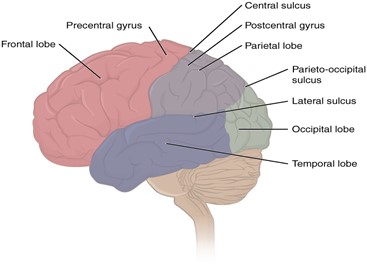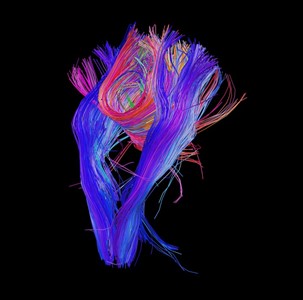Abstract
This lecture overviews Mathematical Brain Modeling that has many applications in Artificial Neural Networks. It covers the following topics in detail: Brain Cells (Sensory and Motor neurons, Interneurons, glia). Neuron main body, axon, dendrites, chemical/electrical synapses. Neuron physiology, Action Potential. Anatomy of the brain: Cerebrum, Cerebellum, brain stem, left and right brain hemisphere, Corpus Callosum, gyri, sulci, gray matter, white matter. Frontal, Parietal, Temporal, Occipital brain lobes.
The Senses: vision, hearing, taste, smell, touch. Deep Structures of the Brain: Thalamus, Limbic System, Hypothalamus Pineal Gland, Pituitary Gland. Invasive and Noninvasive Neuroimaging Techniques: EEG, MEG, MRI, CT, fMRI, PET, DTI, fNIR.
Artificial Neural Networks: Perceptron, Multilayer Perceptron, Hopfield Networks. Human Connectome and brain graphs. Brain graph small-worldness, modularity, network hub structure.

The four lobes of the brain.

Diffusion Tensor Imaging of White matter fiber architecture.
Mathematical Brain Modeling v4.0 summary